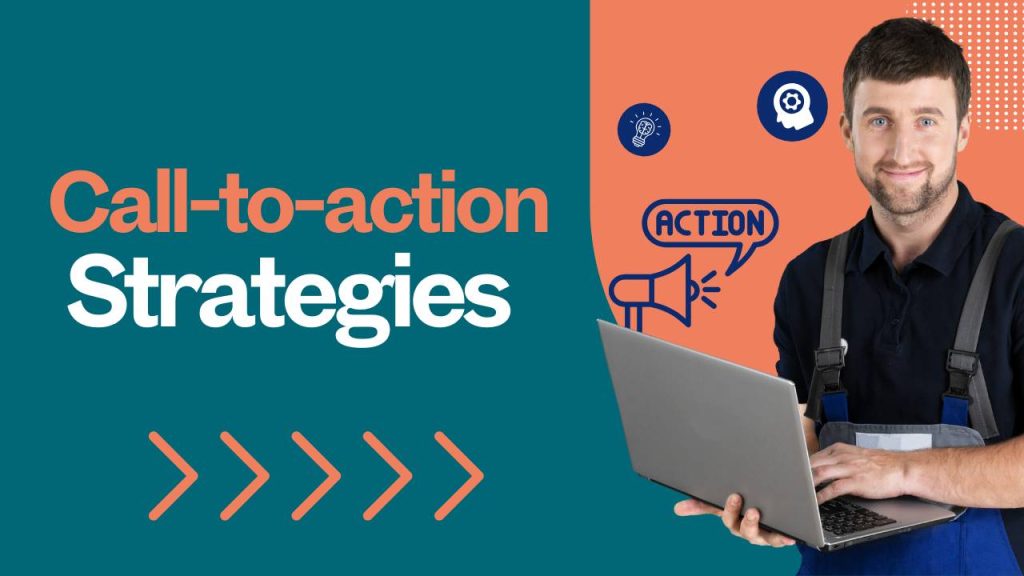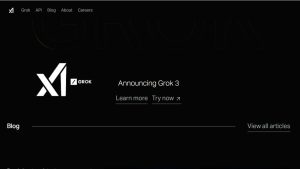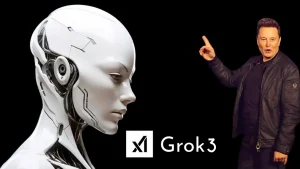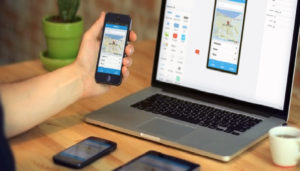When it comes to turning visitors into customers, no website element holds as much power as a compelling call-to-action (CTA). In a digital landscape overflowing with content and choices, it’s your CTA that tells your audience what to do next—and whether they’ll take that action often depends on how well you guide them. In this article, I’ll walk you through 10 proven call-to-action strategies that are guaranteed to skyrocket conversions, drive engagement, and boost results.
Each of these call-to-action strategies is crafted not just to grab attention, but to motivate action by aligning with your audience’s intent and psychology. Let’s break down these techniques with full explanations and real-world applications.
- Use Action-Oriented, Benefit-Driven Language
- Create a Sense of Urgency or Scarcity
- Keep It Visually Prominent and Easy to Find
- Personalize Your CTA Based on User Behavior
- Use Social Proof Within the CTA
- A/B Test Different CTA Variations
- Use Multi-Step CTAs to Reduce Friction
- Align the CTA with Page Content
- Make the CTA Mobile-Friendly
- Use Exit-Intent or Scroll-Based CTAs
1. Use Action-Oriented, Benefit-Driven Language
Your call-to-action (CTA) should be more than just a button—it’s the final nudge that turns a visitor into a lead or customer. Generic CTAs like “Click here” or “Submit” are vague and unmotivating. To boost conversions, your CTA needs to clearly tell the user what action to take and why it’s valuable for them.
Why It Works:
High-converting CTAs use strong verbs and focus on the end result or benefit the user will get by taking action. This not only drives clarity but also builds emotional momentum—people don’t want to submit a form; they want to solve a problem, learn something new, or gain an advantage.
Examples of Action-Oriented, Benefit-Focused CTAs:
1. Instead of “Download”, say
“Get My Free eBook and Start Learning Today”
(This adds urgency and tells the user they’ll begin benefiting immediately.)
2. Instead of “Subscribe”, try
“Join 10,000+ Smart Marketers Who Get Weekly Growth Tips”
(This adds social proof and shows exactly what the user is getting.)
3. Instead of “Sign Up”, try
“Claim Your Free Trial—No Credit Card Required”
(Eliminates friction and highlights the benefit and ease of action.)
4. Instead of “Try Now”, use
“Try the #1 Fitness App Free for 7 Days”
(Adds credibility and a time-limited value.)
5. Instead of “Learn More”, go for
“Discover How You Can Double Your Sales in 30 Days”
(Promises a clear outcome with a time frame.)
Key Tips to Make Your CTA Stand Out:
- Remove friction: Highlight if it’s free, easy, or requires no commitment (“No sign-up required”).
- Use power verbs: “Get,” “Claim,” “Unlock,” “Discover,” “Join,” “Boost,” “Start,” “Save,” “Earn.”
- Be specific: Tell them exactly what they’re getting (e.g., “Get a Free 7-Day Meal Plan”).
- Add urgency: Phrases like “Today,” “Now,” “Limited Time,” or “Before It’s Gone” increase clicks.
- Use social proof: Phrases like “Join 5,000+ members” or “Used by Top CEOs” add trust.
2. Create a Sense of Urgency or Scarcity
One of the most powerful psychological triggers in marketing is the fear of missing out—commonly known as FOMO. By introducing urgency (a time limit) or scarcity (limited quantity), you motivate users to take action immediately rather than putting it off and forgetting altogether.
Why It Works:
Human behavior is wired to respond to loss aversion. We don’t just want good things—we want to avoid missing out on them. A CTA that includes urgency or scarcity makes your offer feel exclusive, valuable, and limited, compelling users to act fast.
Examples of Urgent/Scarcity-Based CTAs:
1. “Limited Time Offer – Expires in 24 Hours!”
(Creates a countdown mentality and immediate incentive to act.)
2. “Only 5 Spots Left – Reserve Yours Now”
(Triggers scarcity and competition—perfect for online courses or coaching.)
3. “Sale Ends Midnight Tonight – Don’t Miss Out!”
(Combines urgency and the fear of loss in a clear deadline.)
4. “Last Chance to Save 30% – Offer Ends Soon!”
(Promotes savings and urgency together.)
5. “Early-Bird Pricing Available Until Friday”
(Encourages early action for better value.)
Tactics to Enhance Urgency or Scarcity in Your CTA:
- Incorporate calendar-related urgency: “Only this weekend,” “Before the holidays,” “Ends on Cyber Monday.”
- Use countdown timers on landing pages or email headers to visually reinforce the time limit.
- Mention stock levels or availability: “Only 3 left in stock,” “Almost sold out,” or “Next batch ships in 2 weeks.”
- Set real deadlines and stick to them. Don’t reset the clock constantly—it breaks trust.
3. Keep It Visually Prominent and Easy to Find
Even the most persuasive call-to-action (CTA) won’t convert if users can’t see it. Design and placement are just as important as the wording of your CTA. A great CTA should visually pop, draw attention instantly, and guide the user’s eyes toward the desired action—without any confusion or effort.
Why It Works:
People skim pages quickly, especially on mobile. A well-placed, visually striking CTA ensures that no matter how fast someone scrolls, they’ll notice the next step you want them to take. It reduces friction and increases the likelihood of conversion simply through visibility and accessibility.
Proven Design Tips for High-Converting CTAs:
1. Use Contrasting Colors:
Choose a button color that stands out from the rest of your site’s color palette, but still complements the overall design.
Example: On a blue-themed site, a bright orange or yellow CTA can draw instant attention.
2. Keep the Button Size Just Right:
Make sure the button is large enough to be seen and tapped (especially on mobile), but not so large that it overwhelms the content.
3. Whitespace is Your Friend:
Use plenty of padding and margin around your CTA. This visual “breathing room” isolates the button from other elements, giving it room to shine and making it easier to spot.
4. Strategic Placement:
- Above the fold – So users don’t have to scroll to see it.
- At the end of your content – After a blog post or product pitch, when the user is primed to take action.
- In sticky headers/footers – So the CTA is always visible as the user scrolls.
- Mid-content – Insert CTAs within your text to catch scanners’ attention.
5. Use Eye-Catching Fonts and Icons:
Bold, easy-to-read fonts increase clarity. Adding a small icon (like an arrow or shopping cart) can also enhance the button’s visual cue without cluttering it.
Don’t Forget Accessibility:
- Ensure color contrast ratios meet accessibility standards so all users, including those with visual impairments, can read the CTA.
- Use descriptive alt text for screen readers.
- Make the button keyboard navigable for users who don’t use a mouse.
Examples of Visually Effective CTAs:
1. A green button on a white background:
“Start My Free Trial”
2. A red CTA on a grayscale layout:
“Get Instant Access”
3. A sticky orange bar at the bottom of a page:
“Save My Spot – Only 2 Days Left!”
4. Personalize Your CTA Based on User Behavior
In today’s data-driven world, personalization is no longer optional—it’s expected. Users are more likely to respond to call-to-actions that reflect their interests, intent, and current position in the buyer’s journey. Generic CTAs may be ignored, but context-aware CTAs make the user feel understood and catered to.
Why It Works:
Personalized CTAs feel more relevant and timely because they speak directly to what the user cares about in that moment. This emotional and contextual connection builds trust and increases the likelihood of conversion. It’s like offering someone exactly what they need—right when they need it.
Types of User Data You Can Use to Personalize CTAs:
- Behavioral Data: Pages visited, time on site, products viewed, scroll depth.
- Traffic Source: Whether they came from an email campaign, social media, search engine, or ad.
- Device or Location: Tailor CTAs for mobile users vs. desktop, or display location-specific offers.
- Returning vs. New Visitors: Show special offers or greetings to loyal users.
- Stage in the Funnel: Awareness, consideration, or decision stage.
Personalized CTA Examples That Convert:
1. Blog Behavior-Based:
After reading an article on SEO:
“Get a Free SEO Audit for Your Site”
After viewing a post about email marketing:
“Download Our Email Campaign Starter Kit”
2. Shopping Cart Abandonment:
“Complete Your Purchase Now and Save 10%”
“Still Thinking It Over? Here’s a 15% Discount—Valid for 1 Hour!”
3. Previous Purchase Behavior:
“Liked Product A? Here’s a Bundle Deal with Product B”
“Time to Restock? Get 20% Off Your Reorder”
4. Location-Based Personalization:
“Free Shipping to California – Shop Now”
“Join Our NYC Event – Limited Seats Available!”
5. Referral Source-Specific CTAs:
If a user lands from Facebook:
“Unlock This Facebook-Only Offer Today”
If a user clicked through an email:
“Welcome Back! Redeem Your Subscriber Discount Now”
5. Use Social Proof Within the CTA to Build Trust and Boost Conversions
In a world saturated with digital offers, users are increasingly cautious about what they click on or sign up for. One of the most effective ways to ease their uncertainty and boost conversions is by incorporating social proof directly into your call-to-action (CTA).
It’s not enough to just ask users to take action—you must show them that others have done the same and found value in it. Social proof acts as a psychological trigger that builds trust, reassures visitors, and subtly communicates: “You’re not the first, and you won’t be disappointed.”
Why Social Proof Enhances CTA Performance
When potential customers visit your site, they often question the legitimacy or value of your offer. This internal doubt is natural, especially if they’re new to your brand. By showing them that thousands of others have already taken the same step—and benefited from it—you provide the validation they need to feel comfortable taking action. This technique is rooted in behavioral psychology: when people see others doing something successfully, they are more inclined to do it themselves.
Instead of simply saying, “Subscribe Now,” a more effective CTA would be,
“Join Over 25,000 Marketers Already Getting Our Weekly Growth Tips.”
This version not only asks for action but also builds credibility by showcasing that many others have already made the same choice—and that it’s paying off.
Types of Social Proof That Work Well in CTAs
There are multiple ways to inject social proof into your CTA, and the best strategy depends on your industry, audience, and goals. Below are the most common types that consistently deliver high performance:
1. User Count Statistics
Mention how many people have already subscribed, downloaded, or signed up.
Example: “Get the eBook Trusted by 18,000+ Content Creators.”
2. Customer Ratings and Reviews
Use high star ratings or satisfaction percentages to demonstrate user satisfaction.
Example: “Try the Tool Rated 4.9/5 by 10,000+ Users.”
3. Client Logos or Brand Mentions
Showcase recognizable brands that use or endorse your product.
Example: “Trusted by Teams at Google, HubSpot, and Shopify.”
4. User Testimonials or Quotes
Include a short, powerful quote from a real user next to or below your CTA button.
Example: “‘This tool doubled my leads in just 30 days.’ — Amanda T.”
5. Live Activity or Popularity Indicators
Display real-time data showing how many people are taking action.
Example: “32 People Downloaded This in the Last Hour.”
Each form of proof adds a unique layer of trust and demonstrates that your offer isn’t just empty words—it’s backed by results and real human interaction.
How to Incorporate Social Proof Naturally into CTAs
When integrating social proof, it’s important to maintain natural flow and clarity. The CTA should feel like a complete message rather than two unrelated pieces of information. For example, instead of separating a testimonial from your button, combine the proof and the action into one persuasive line.
Instead of this:
- “Download Now”
- (Below the button: “Used by over 5,000 marketers”)
Try this:
- “Download the Free Toolkit Trusted by 5,000+ Marketers”
This format places the benefit, proof, and action into a single line, increasing the likelihood of conversion. You can also enhance this with a design that supports credibility—such as including star icons, user avatars, or logos of well-known clients.
6. A/B Test Different CTA Variations
No matter how powerful a CTA seems, it’s impossible to know what works best without testing. A/B testing (also known as split testing) involves comparing two versions of a CTA to see which one performs better based on real user behavior.
Elements to test:
- Button color: A bold red might attract more attention, but a calming green may convert better—only testing can tell.
- CTA text: “Get Started” vs. “Start Your Free Trial” may seem similar, but small word changes can lead to significant shifts in engagement.
- Placement on the page: Try placing the CTA above the fold, at the end of a blog post, or in a sticky bar—each position influences visibility and action.
- Font size and style: Larger, bolder text can drive urgency, while more elegant fonts may feel more trustworthy for professional services.
Run tests one variable at a time to pinpoint exactly what’s working. This strategy ensures you’re not relying on guesswork. Instead, you’re making data-driven decisions to boost your conversion rate, backed by measurable results.
7. Use Multi-Step CTAs to Reduce Friction
Asking users to make a big decision right away can scare them off. But if you break the action into smaller, lower-commitment steps, they’re more likely to follow through. This is where multi-step call-to-action strategies come in and shine.
Example CTA Flow:
Step 1: “Want to see if you qualify?”
Step 2: Click a button: “Take the 30-Second Quiz”
Step 3: Provide tailored recommendations or offers based on quiz results.
These smaller steps act as psychological warm-ups, encouraging users to engage without feeling overwhelmed. Each step builds momentum and commitment. Before they realize it, they’ve taken multiple actions, making the final conversion feel natural and earned rather than forced.
Multi-step CTAs also give you more user data to personalize future messaging, leading to stronger long-term conversions.
8. Align the CTA with Page Content
Your CTA should be a natural extension of the content on the page. If someone is reading an article about email marketing, it wouldn’t make sense to show them a CTA about social media tools. That disconnect can confuse visitors, reduce relevance, and lower conversions.
Instead, focus on contextual alignment between your content and your CTA.
Page-aligned CTA examples:
- Blog on productivity tips → “Download the Free Productivity Toolkit to Get More Done Today”
- Article on fitness tips → “Join Our Free 7-Day Fitness Challenge and Kickstart Your Health Journey”
- Guide on home buying → “Get Your Free Mortgage Rate Checklist”
When the CTA feels like the next logical step in the user’s journey, they’re much more likely to click. Relevance builds trust and increases the likelihood of action because it feels timely, valuable, and personalized.
9. Make the CTA Mobile-Friendly
Over 60% of web traffic now comes from mobile devices, yet many CTAs are still built primarily with desktop users in mind. This oversight creates a frustrating experience for mobile visitors, who are often ready to take quick action—but can’t due to poor design or layout. That’s why optimizing your call-to-action for mobile is not just good practice—it’s a must.
Tips to optimize for mobile:
- Use large, tappable buttons: Fingers aren’t as precise as a mouse. Ensure your CTA buttons are big enough to tap easily, with plenty of spacing to avoid accidental clicks.
- Keep CTA text short and clear: Mobile screens have limited space. Use concise language that communicates value in just a few words—like “Get the Guide” or “Claim Your Offer.”
- Position the CTA smartly: Use sticky bottom banners or center-screen pop-ups that don’t obstruct content but remain noticeable.
- Ensure fast-loading performance: Mobile users are impatient. A CTA that lags or doesn’t load quickly can lead to missed opportunities and high bounce rates.
Also, avoid overcrowding the screen—clean, minimal design is your best friend. A seamless, mobile-optimized CTA ensures more conversions, especially in industries like eCommerce, local services, and lead generation, where mobile-first behavior dominates.
10. Use Exit-Intent or Scroll-Based CTAs
Sometimes, the best time to prompt a user is when they’re just about to leave or when they’ve shown a strong intent to engage by scrolling deep into your page. That’s where behavioral CTAs like exit-intent or scroll-based triggers come into play. These smart CTAs are based on real-time user actions—and they’re often more effective than static CTAs that sit quietly on the page.
Effective CTA examples:
1. Exit-intent pop-up:
“Wait! Before You Go—Get 15% Off Your First Order If You Sign Up Now!”
These pop-ups trigger when the cursor moves toward the browser’s close button or back arrow—catching users in the act of leaving with a compelling reason to stay.
2. Scroll-based CTA:
“You’ve Read 80%—Now Download the Full Guide to Go Deeper!”
This kind of CTA rewards engaged readers who’ve scrolled through most of the content, inviting them to take the next logical step.
You can also customize these CTAs based on device, time spent, or user behavior for hyper-targeted experiences. Use urgency, exclusivity, or helpfulness in the messaging to improve effectiveness.
When used strategically, these CTAs can recover abandoning traffic, extend time on site, and increase sign-ups or purchases, especially when paired with an irresistible offer or freebie.
Running an eCommerce store, a SaaS product, or a personal blog, implementing these call-to-action strategies consistently can help you convert more visitors, generate more leads, and increase revenue. Always remember: it’s not just what you ask users to do—it’s how, when, and why you ask that truly matters.
FAQs
1. What is a call-to-action (CTA)?
A CTA is a prompt that encourages users to take a specific action, such as “Buy Now,” “Sign Up,” or “Learn More.” It helps guide users toward conversion goals.
2. Why are CTAs important in marketing?
CTAs direct your audience on what to do next. Without a CTA, users may not know how to proceed, which can lead to missed conversions or engagement opportunities.
3. What makes a CTA effective?
An effective CTA is clear, compelling, and actionable. It uses strong verbs, creates urgency or value, and aligns with user intent.
4. Where should I place my CTA on a webpage?
Place CTAs above the fold, within content, and at the end of pages—anywhere the user might be ready to take action. Use heatmap tools to test best placements.
5. What are examples of strong CTA phrases?
- “Get Started Free”
- “Download Your Guide”
- “Claim Your Discount”
- “Join the Waitlist”
- “Try It Risk-Free”
6. How do I test the performance of my CTA?
Use A/B testing to compare different versions of your CTA (wording, color, placement) and measure performance through click-through rates (CTR), conversions, and engagement.
7. How many CTAs should I use on a page?
Use 1–3 CTAs per page depending on content length. Too many CTAs can confuse users, while too few may miss opportunities.
8. What’s the difference between a primary and secondary CTA?
- Primary CTA: The main action you want the user to take (e.g., “Buy Now”)
- Secondary CTA: A backup action with less urgency (e.g., “Learn More”)
9. How can I personalize CTAs for better results?
Tailor CTAs based on user behavior, location, or stage in the sales funnel. For example, returning visitors could see “Continue Where You Left Off” instead of “Sign Up.”
10. Can CTAs be used in emails and social media too?
Absolutely. Emails, Instagram bios, Facebook posts, YouTube videos, and even tweets can benefit from a well-crafted CTA to drive traffic and conversions.




